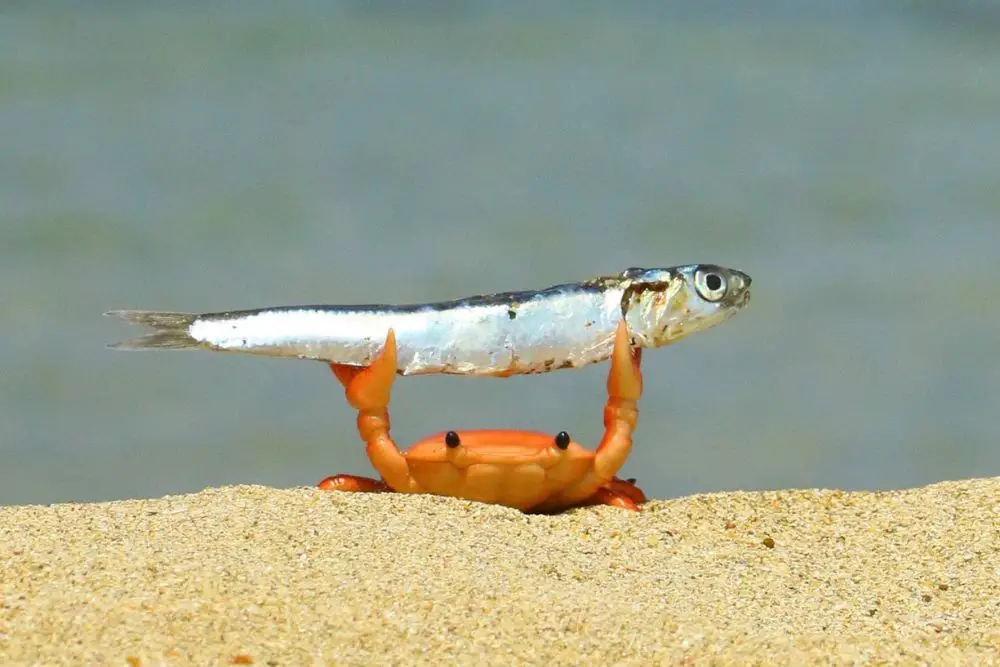Crabs do eat fish. In fact, they are known to be scavengers and will eat just about anything that they can find. This includes small fish, as well as other marine creatures such as shrimp and clams.
While it is not uncommon for crabs to eat fish, it is not necessarily a good thing for the fish population. This is because crabs can easily outcompete other marine creatures for food, which can lead to reduced numbers of fish.

Crabs are omnivore crustaceans that consume a variety of sea creatures in their diet. Mollusks, other crustaceans, worms, algae and seaweed, and to a lesser extent fish, make up the bulk of crabs’ diets.
Crabs typically inhabit dim environments that make it challenging for them to use their eyesight to seek prey; as a result, they mostly rely on their senses of smell and taste.
Chemoreceptors allow them to recognize chemicals released into the water by their prey. Their antennae the long, segmented appendages next to the eyes have chemoreceptors that allow them to sense their surroundings.
Additionally, crabs have smaller antennules that resemble antennae and are located close to the antennas.
A crab can “taste” the molecules that emanate from its prey thanks to the hair that is present on its lips, pincers, and feet. A crab’s ability to locate its prey depends on the water’s velocity.
Blue crabs do a fantastic job of tracking their prey in low-velocity rivers, but struggle in high-velocity, turbulent flows, according to a 2009 paper by biology professor Mark Hay.
Crabs can chop, pick, sort, and pulverize food using a variety of specialized appendages. They shred the food into smaller chunks with their powerful pincers to make it easier to put in their mouths.
They occasionally even try to catch living fish that are swimming past, but they rarely succeed.
They will consume live fish. Crabs will seek out damaged or sick fish because they are simpler to catch because healthy fish are typically too swift and aware for most crabs to grab.
Smaller crabs are opportunistic hunters, like the hermit crab. They won’t go after big, living fish, but they will unquestionably eat sick or dying fish.
Crustaceans, such as crabs, are bottom feeders, or scavengers. In their native environment, crabs search for food at low tide and scavenge for leftovers from other animals at high tide.
Crabs prefer to scavenge small, dead fish because they are frequently the target of huge, living fish.